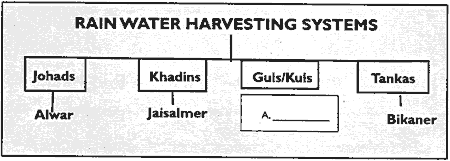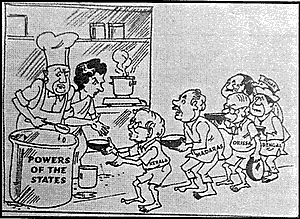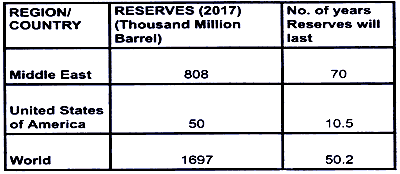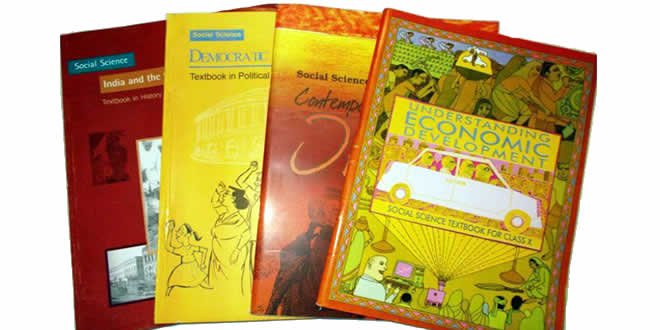10 CBSE Social Science Exam: First Term Exam 2023-24: N.K. Bagrodia Public School, Rohini
| School Name: | N. K. Bagrodia Public School, Sector 9, Rohini, New Delhi 110085 India |
| Class: | 10th Standard (CBSE) |
| Subject: | Social Science |
| Time Duration: | 03 Hours |
| Maximum Marks: | 80 |
| Date: | ~ September 2023 |
General Instructions: 10 CBSE Social Science Exam
- Question paper comprises five Sections – A, B, C, D and E. There are 37 questions in the question paper. All questions are compulsory.
- Section A – From question 1 to 20 are MCQs of 1 mark each.
- Section B – Question no. 21 to 24 are Very Short Answer Type Questions, carrying 2 marks each. Answers to each question should not exceed 40 words.
- Section C – Question no. 25 to 29 are Short Answer Type Questions, carrying 3 marks each. Answers to each question should not exceed 60 words.
- Section D – Question no. 30 to 33 are long answer type questions, carrying 5 marks each. Answers to each question should not exceed 120 words.
- Section E – Questions no. from 34 to 36 are case based questions with three sub questions and are of 4 marks each.
- Section F – Question no. 37 is map based, carrying 5 marks with two parts.
- There is no overall choice in the question paper. However, an internal choice has been provided in a few questions. Only one of the choices in such questions have to be attempted.
- In addition to this, separate instructions are given with each section and question, wherever necessary.
SECTION A: MCQ Questions – 10 CBSE Social Science Exam
Question: 01. What did the customs union or zollverein do?
- Abolished tax
- Abolished tariff barriers and reduced the number of currencies from over thirty to two
- Abolished tariff charges and reduced the currencies to five
- Abolished guild restrictions
Question: 02. Which set of symbols of nationalism of Europe and their significance is incorrectly paired?

Question: 03. The term Plebiscite means:
- Adult Franchise
- A direct vote by which all the people of a region are asked to accept or reject a proposal
- When the rich and the aristocrats select their leaders
- A vote by the people to elect their leader
Question: 04. Identify the type of soil from the following statements:
• This soil develops on crystalline igneous rocks in areas of low rainfall in the eastern and southern parts of the Deccan plateau.
• These soils are also found in parts of Odisha, Chhattisgarh, southern parts of the middle Ganga plain and along the piedmont zone of the Western Ghats.
• These soils develop their colour due to diffusion of iron in crystalline and metamorphic rocks.
(a) Alluvial soil
(b) Black soil
(c) Laterite soil
(d) Red and Yellow soil
Question: 05. The availability of resources is a necessary condition for the development of any region. Apart from this what is required for development?
- Huge workforce for the exploitation of resources
- Easy access of the resources for the people living in that region
- Corresponding changes in technology and institutions
- Rich cultural heritage
Question: 06. Complete the flowchart with respect to the rain water harvesting systems in India from the options given below:

- Southern Himalayas
- Western Himalayas
- Eastern Himalayas
- Northern Himalayas
Question: 07. Which of the following statements accurately distinguishes between Majoritarianism and Power sharing?
- Majoritarianism emphasizes the dominance of the majority community, while Power sharing emphasizes the sharing of power among different groups.
- Majoritarianism emphasizes the need for consensus building, while Power sharing emphasizes the exclusion of minority groups.
- Majoritarianism emphasizes the importance of accommodating minority interests, while Power sharing emphasizes the need for majority rule.
- Majoritarianism emphasizes the need for peaceful resolution of conflicts, while Power sharing emphasizes the use of force to impose the majority’s will.
Question: 08. Consider the following statements on power sharing and select the answer using the codes given below:
- It is good for democracy.
- It creates harmony in different groups.
- It brings transparency in the governance.
- It brings socio-political competition among parties.
Options:
- I, II and Ill
- II, Ill and IV
- I, Ill and IV
- I, II and IV
Question: 09. The picture given below is an example of __________

Options:
- Linguistic states
- Horizontal power sharing
- Accommodation
- Centre-state relationship
Question: 10. Consider the following statements on the meaning of communal politics.
Communal politics is based on the belief that:
A. One religion is superior to that of others.
B. People belonging to different religions can live together happily as equal citizens.
C. Followers of a particular religion constitute one community.
D. State power cannot be used to establish the domination of one religious group over others.
Which of the statements is / are correct
Options:
(a) A, B, C, and D
(b) A, B, and D
(c) A and C
(d) B and D
Question: 11. Shazia’s teacher asked her a question, to which she answered, “MGNREGA 2005”. What could have been the teacher’s question?
(a) Name the act that was devised to implement the Right to Work.
(b) Name the act that was devised to implement the Right to Equality.
(c) Name the act that was devised to implement the Right to Freedom.
(d) Name the act that was devised to implement the Right to Education.
Question: 12. Fill in the blanks:

(a) Nature of production
(b) Nature of employment
(c) Nature of society
(d) Nature of ownership
Question: 13. Which one of the following is the correct meaning of ‘Average Income’?
(a) The total income of the country divided by its earning population.
(b) The total income of the country divided by its total population.
(c) The total income of all the residents of the country.
(d) The total income from the domestic and foreign sources.
Question: 14. Which one of the following best describes the Human Development Index (HDI)?
(a) Improvement in science, information and technology
(b) Improvement in health, education and income
(c) Improvement in information and communication
(d) Improvement in investment, finance and technology
Question: 15. “Consequences of environmental degradation do not respect national or state boundaries.” Which of the following is the essence of this statement?
(a) Economic development
(b) Human Development
(c) Sustainable Development
(d) National Development
Question: 16. “There is a strike by the Transporters. Thus the lorries to the cities carry no vegetables, milk etc. This in turn results in scarcity of goods in the city. The farmers also face losses, as they are not able to sell their goods”. Analyse the situation considering one of the following correct options.
(a) Interdependence of the sectors
(b) Transportation of the goods from rural areas to urban areas
(c) Scarcity of goods in the urban areas
(d) Dependence of Primary sector on Tertiary sector
Question: 17. Given are three reactions to the language policy followed in India. Which of the following holds true in the case of India?
(a) The language policy has only helped to consolidate the dominance of English over other languages.
(b)The policy of accommodation has strengthened national unity.
(c) Language based states have divided us by making everyone conscious of their language.
(d) All the above
Question: 18. How does the expression of caste differences in politics be beneficial for many disadvantaged communities?
(a) It helped people from dalits and OBC castes to gain better access to decision making.
(b) It gives many disadvantaged communities the space to demand their share of power.
(c) Both of these
(d) None of these
Question: 19.
Assertion (A): Reserved and protected forests are also referred to as permanent fore, estates maintained for the purpose of producing timber and other forest produce, and fo protective reasons.
Reason (R): North-eastern states and parts of Gujarat have a very high percentage of their forests as unclassed forests managed by local communities.
Options:
- Both A and R are true and R is the correct explanation of A.
- Both A and R are true but R is not the correct explanation of A.
- A is true but R is false.
- A is false but R is true.
Question: 20. 10 CBSE Social Science Exam
Assertion (A): During the 1830s, Giuseppe Garibaldi had sought to put together a coherent programme for a unitary Italian Republic.
Reason (R): Chief Minister Cavour who led the movement to unify the regions of Italy was neither a revolutionary nor a democrat.
- Both A and R are true and R is the correct explanation of A.
- Both A and R are true but R is not the correct explanation of A.
- A is true but R is false.
- A is false but R is true.
SECTION B: Very Short Answer Type Questions
Question: 21. Highlight any two main features of conservatism?
Question: 22. “Indian society comprises several cultures, each with its own set of traditional methods of conserving nature and its creations.” Justify the statement with the help of examples.
Question: 23. You are a citizen of a country that has a democratic form of government. You want to ensure that the system of power-sharing in your country is effective and that no one branch of government has absolute power. State any two measures that would best meet this goal.
Question: 24. “Money in your pocket cannot buy all the goods and services that you may need to live well.” Elucidate.
SECTION C: Short Answer Type Questions
Question: 25. “When the Civil Disobedience Movement started there was an atmosphere of suspicion and distrust between communities.” Explain.
Question: 26. Explain any three factors responsible for the formation of soil.
Question: 27. “The dams that were constructed to control floods have triggered many other problems.” Justify the statement.
Question: 28. Why is the ethnic composition of Belgium very complex?
Question: 29. Compare the employment conditions prevailing in the organized and unorganized sectors.
SECTION D: Long Answer Type Questions
Question: 30. “Method of reinterpretation of history was followed to encourage a feeling of nationalism.” Give any five arguments to support this statement.
OR
Describe the implications of the First World War on the economic and political situation of India.
Question: 31. Describe any five institutional reforms introduced by the government of India in the interest of the farmers.
OR
Explain any five features of plantation farming.
Question: 32. Describe the provisions of amendments made in the Constitution of India in 1992 for making third tier of government more effective and powerful.
OR
“The language policy of India is an important aspect of our country.” Give arguments in favour of this statement.
Question: 33. Explain measures that can be adopted to remove disguised unemployment in the agriculture sector.
OR
Explain how the public sector contributes to the economic development of a nation.
SECTION E: Source Based Questions – 10 CBSE Social Science Exam
Question: 34. Read the source given below and answer the questions that follow:
The first upheaval took place in France in July 1830. The Bourbon kings who had been restored to power during the conservative reaction after 1815, were now overthrown by liberal revolutionaries who installed a constitutional monarchy with Louis Philippe at its head. ‘When France sneezes,’ Metternich once remarked, ‘the rest of Europe catches cold.’ The July Revolution sparked an uprising in Brussels which led to Belgium breaking away from the United Kingdom of the Netherlands.
An event that mobilized nationalist feelings among the educated elite across Europe was the Greek war of independence. Greece had been part of the Ottoman Empire since the fifteenth century.
(a) ‘When France sneezes, the rest of the world catches cold’, who remarked this and why?
(b) Name the treaty which recognised Greece as an independent nation.
(c) What is the July Revolution?
Question: 35. Read the source given below and answer the questions that follow:
The gender issue was raised in politics much later. Women in different parts of the world organised and agitated for equal rights. There were agitations in different countries for the extension of voting rights to women. These agitations demanded enhancing the political and legal status of women and improving their educational and career opportunities. More radical women’s movements aimed at equality in personal and family life as well. These movements are called feminist movements. In our country, women still lag much behind men despite some improvement since Independence. Ours is still a male-dominated, PATRIARCHAL society. Women face disadvantage, discrimination and oppression in various ways.
- What does the term patriarchy refer to?
- What do you mean by the term ‘Feminist’?
- What were the demands of the women’s movements?
Question: 36. Look at the following data for crude oil and answer the questions given below:

- What does the above table show?
- “Crude oil is essential for the developmental process in a country”. Discuss.
- What problem do you anticipate for India looking at the above situation?
SECTION F: Map Skill Based Question
Question: 37. 10 CBSE Social Science Exam
(a) Three features (A), (B) and (C) are marked on the given outline political map of India. Identify these features with the help of information and write their correct names on the lines marked near them.
A. The place where Gandhiji organised a Satyagraha against the oppressive plantation stem in 1917.
B. The place associated with the massacre of hundreds of innocent Indians.
C. major food crop that is produced in the state marked with C.
(b) On the same outline map of India, locate and label any two of the following with suitable symbols.
A. Salal Dam
B. Nagarjuna Sagar Dam
C. Tehri Dam
 Class Notes NCERT Solutions for CBSE Students
Class Notes NCERT Solutions for CBSE Students





